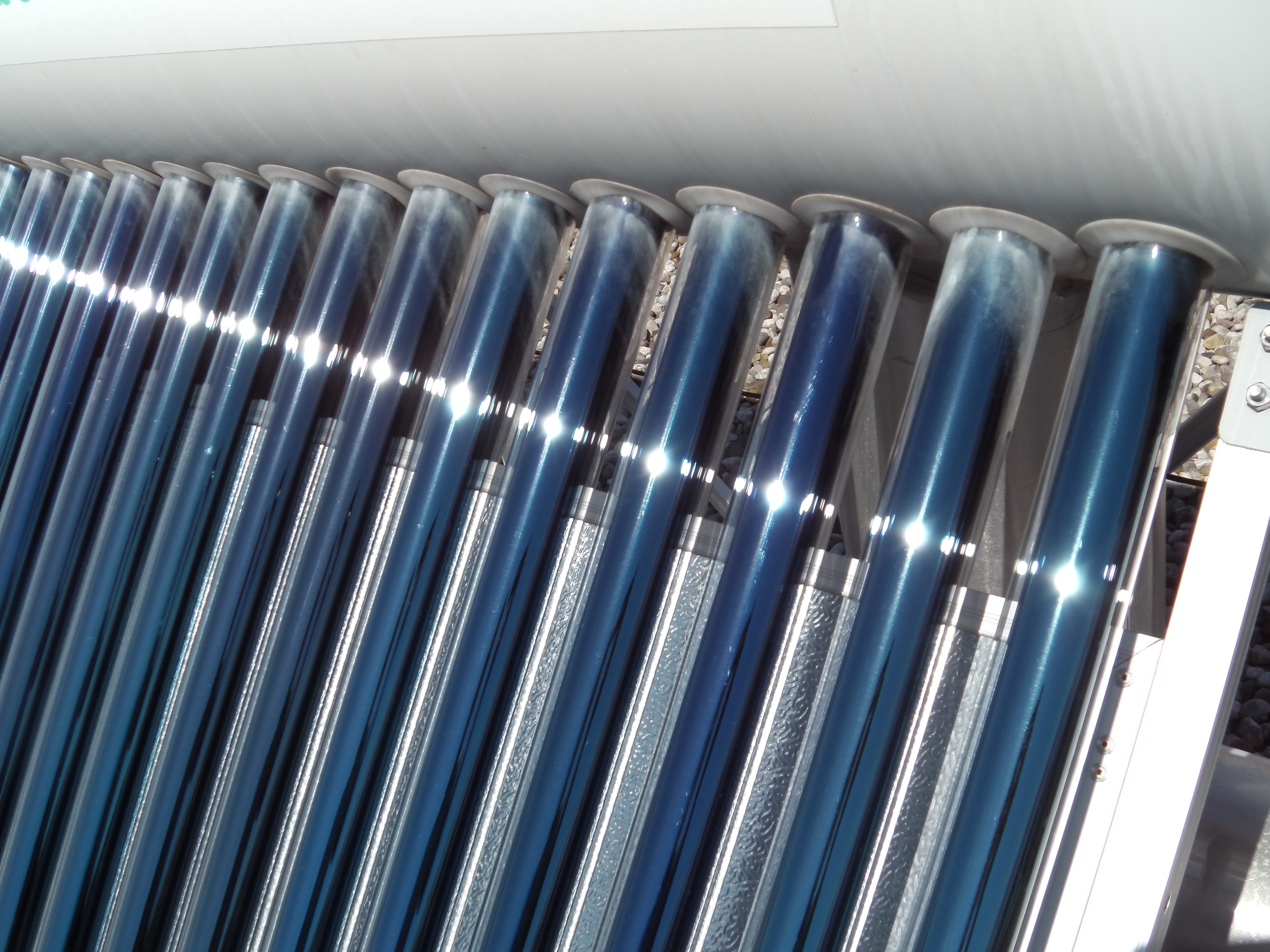Solar Domestic Water Heating
 Solar energy can be used to generate low-carbon heat as well as electricity. Historically, solar domestic hot water (DHW) systems have used either flat-plate solar collectors or evacuated tubes. Both employ a solar absorber that heats up in sunlight and transfers heat energy to a fluid flowing through the system. This is a very efficient approach, with conversion efficiencies that are several times that of electricity-producing solar photovoltaic (PV) modules. The main drawback, as STEP has learned through various projects in this area, is that it requires mechanical components that are prone to failure if not maintained on a regular basis.
Solar energy can be used to generate low-carbon heat as well as electricity. Historically, solar domestic hot water (DHW) systems have used either flat-plate solar collectors or evacuated tubes. Both employ a solar absorber that heats up in sunlight and transfers heat energy to a fluid flowing through the system. This is a very efficient approach, with conversion efficiencies that are several times that of electricity-producing solar photovoltaic (PV) modules. The main drawback, as STEP has learned through various projects in this area, is that it requires mechanical components that are prone to failure if not maintained on a regular basis.
In contrast, drastic decreases in the cost of PV, and advances in heat pump technology, may make other solar DHW alternatives possible. A solar DHW system which uses PV modules would be less efficient but may actually have several advantages: simplicity, ease of retrofit and minimal maintenance. However, PV-based DHW systems are currently uncommon because natural gas is inexpensive and it is a better investment to simply sell PV electricity to the grid. This situation may change with the growing impetus to reduce carbon emissions and in the meantime, STEP projects will seek to evaluate the various approaches and provide much needed operational guidance.
